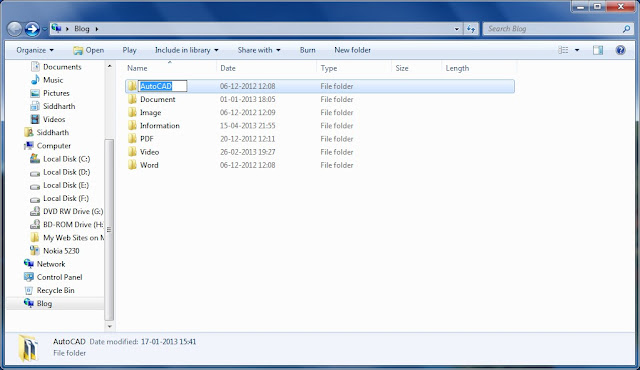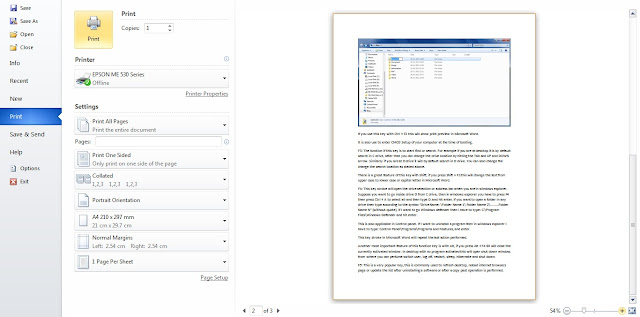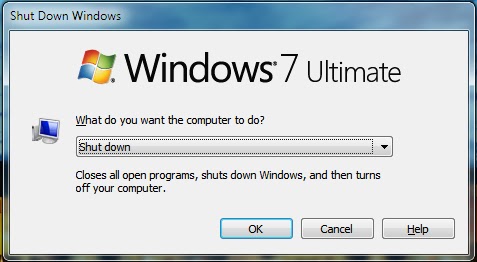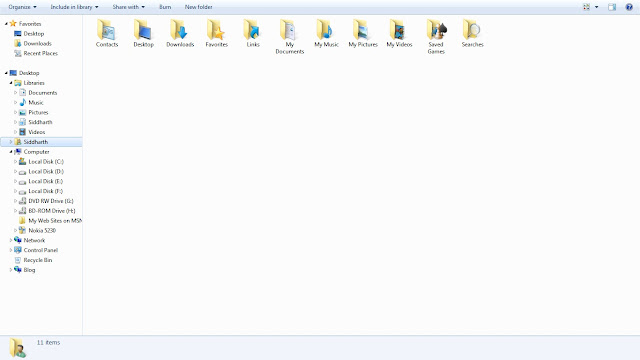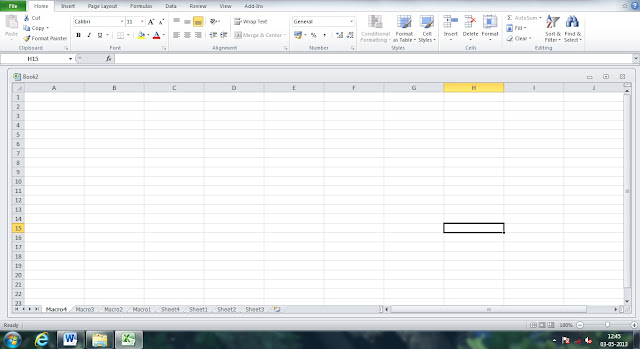Introduction: In every
keyboard there are 12 function keys (F1 through F12) at the top of the
keyboard. These key have different application in different places. This means
that depending upon the operating system and the currently opened software
program the application will change. These are described briefly as follow.
It is also
possible to use these function keys with other keys like Alt and Ctrl. As
stared above not all program support function keys and may perfume different
task depending upon the operating system and software. In case of laptop these
function keys are not available directly rather by pressing with Fn keys. You
can also change this setting, to know more how to change function key setting
click here.
F1: This key is used to activate help
for Windows or current open application. For example if you are at Windows
Desktop F1 key will open Windows Help and Support .Similarly if your current
opened window is Microsoft Word by hitting or pressing F1 it will open
Microsoft Word help. It is also possible to open Windows Help and Support in
other application, for that you have to press Windows key + F1.
F2: This key is used to rename the
highlighted folder, icon, and file.
If you use this
key with Ctrl + F2 this will show print preview in Microsoft Word.
It is also use
to enter CMOS Setup of your computer at the time of booting.
F3: The function if this key is to
start find or search. For example if you are at desktop it is by default search
in C drive, after that you can change the drive location by hitting the Tab and
UP and DOWN arrow. Similarly if you are at D drive it will by default search in
D drive. You can also change the change the search location as stated above.
There is a great
feature of this key with Shift; if you press Shift + F3 after selecting a line
or entire document this combination will first make the starting letter of the
selection as capital (upper case), in the second press this will make all letter
and word to capital (upper case) and in final press this change every letter or
word to small in Microsoft Word. In simple word Shift + F3 toggles between
capitalizing the starting word, capitalizing all word and lower case for the
selected text in Microsoft Word. Example
is as shown below.
F4: This key stroke will open the
drive selection or address bar when you are in windows explorer. Suppose you
want to go inside drive D from C drive, then in windows explorer you have to
press F4 then press Ctrl + A to select all and then type D: and hit enter. If
you want to open a folder in any drive then type according to the syntax “Drive
Name: \Folder Name 1\ Folder Name 2\.........Folder Name N” (without quote). If
I want to go Windows defender then I have to type: C:\Program Files\Windows
Defender and hit enter.
This is also
applicable in Control panel. If I want to uninstall a program then in windows
explorer I have to type: Control Panel\Programs\Programs and Features, and enter.
This key stroke in Microsoft Word will repeat the last action performed.
Another most important feature of this function key is with Alt, if you press Alt + F4 till will close the currently activated window.
In desktop with no program activated or running this will open shut down dialog box, from where you can perfume switch user, log off, restart, sleep, hibernate and shut down.
F5: This is a very popular key, this
is commonly used to refresh desktop, reload internet browsers page or update
the list after uninstalling a software or after a copy past operation is performed
between folders.
This also opens
the find and replace dialog box in windows word.
This also starts
slideshow in Microsoft PowerPoint.
F6: The prime use of this key is
that when you are on desktop then you can easily select desktop files, task
bar, and system tray icons.
If you are in
windows explorer and press this key it will move the cursor to different
Windows Explorer panel.
This function
key is also used to move the cursor to the address bar in Internet Explorer,
Google Chrome, Mozilla Firefox and most modern browsers.
In Microsoft
Word this will show the shortcut letter for different menu item.
F7: This key has application in a
document page of Microsoft Word, Outlook etc. This will open spelling and
grammar window in Microsoft Word.
F8: When Windows is booting or
starting this key stroke helps the user to access the computer in Safe Mode.
F9: This is generally used in
programming environment like C++, Dev. C++ etc. It is used to compile the
program in combination with Ctrl. It means that for compile you have to press
Ctrl + F9.
This function
key has application in Mac OS, in Mac OS this will show all open windows.
F10: This function key will
highlights the File menu bar in all versions of windows.
Instead of
righting clicking you can also press Shift + F10 in the selected or highlighted
icon file or an internet link. In simple words it is same as right click on
selected or highlighted item. You can also use this combination on desktop
also.
At the time of
booting this key stroke enables the user to enter and edit CMOS Setup.
F11: In all modern Internet
browsers and in Windows Explorer this will enable and disable full screen mode.
On Microsoft Excel
Shift + F11 combination will add a new sheet and Ctrl + F11 will add a new
macro to the current workbook.
F12: This will open the Save as
window in in Microsoft Office
If you press
Shift + F12 this will save the Microsoft Word document.
Printing a document
in Microsoft Word is also possible by pressing Ctrl + Shift + F12
simultaneously. This will perfume the same operation as Ctrl + P; this means
instead of pressing Ctrl + Shift + F12 you can also use Ctrl + P for printing a
document. The difference in these two shortcuts is that the first short is
available only in Microsoft Word whereas the second shortcut is available everywhere.

